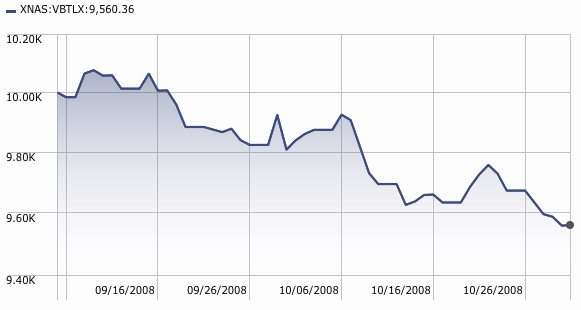Research Reveals Cash Reserve Strategies Don t Work Unless You re A Good Market Timer
Post on: 27 Июнь, 2015 No Comment

Are Cash Reserve Strategies A Mirage?
The somewhat surprising results of the buffer zone study reveal that in the end, having a significant portion of the portfolio in cash creates so much of a drag on long-term returns, that the end result is a less sustainable portfolio (which is why the effect is especially severe at higher withdrawal rates and/or longer withdrawal time horizons where eventually getting equity returns, even after an extended bear market, are important). After all, at a 4% withdrawal rate, having 4 years of withdrawals draws nearly 1/6th of the entire portfolio into cash, which takes a material portion of long-term return off the table.
These results occur even though the retiree avoids taking withdrawals during down years in the portfolio by using the cash reserve account. In point of fact, this shouldn’t necessarily be surprising — as noted previously on this blog, the reality is that in a regularly rebalanced portfolio, cash reserve strategies are generally unnecessary to avoid selling stocks in a bear market. as the act of rebalancing alone ensures that withdrawals are always taken from the higher returning asset class.
Certainly, it’s possible to construct scenarios where everything in the portfolio declines simultaneously, and then rebounds simultaneously to a new high, such that it would have been better to draw from the cash reserve in the down year and then replenish it after the recovery. However, the significant and uniform decline in success rates across the board makes it clear that in the end, rebalancing alone is most often sufficient to ensure that the right investments are sold, such that adding a significant cash reserve is more a drag on returns than a savior of them.
In fact, in extended bear markets, it’s actually possible for the buffer zone strategies to cause even more damage than systematic withdrawals. For instance, if the client has a 3-year cash reserve and experiences a 3-year bear market with a moderate bounce at the end (e.g. a portfolio return sequence of -5%, -10%, -20%, +10%) then given how bear market returns compound, the client would actually have had a higher average sales price by simply liquidating a portion of the portfolio each year, rather than taking replenishing the cash reserve bucket with three years of spending after only a slight rise from the bottom. This is effectively equivalent to selling out three years of spending near the bottom all at once, bulking up the portfolio’s cash holdings before the full recovery occurs!
The Timing Of Cash Reserve Strategies
Some readers may take issue with the particular strategy the authors used to replenish cash reserves. Would it have been better to limit the sale from the portfolio from cash reserves until the portfolio recovered to its prior highs? Should a larger cash reserve bucket have been used, along with a requirement of two years of recovery before restoring it? Could some other formula have been applied that would have had a less harmful timing impact than the consequences of a 3-year bear market on a 3-year buffer zone as shown in the earlier example?
Perhaps, but if the fundamental point is to utilize a buffer zone approach as a market timing strategy to tilt equity exposures upwards or downwards by 5%-10% (by depleting and replenishing a 2-4 year cash reserve) to generate higher returns or reduce risk, then the same could be accomplished without the cash reserves, simply by adjusting equity exposure of the entire portfolio! For instance, Improving Risk-Adjusted Returns Using Market-Valuation-Based Tactical Asset Allocation Strategies in the December 2011 issue of the Journal of Financial Planning showed how tilting equity exposure up or down based on market valuation can enhance both returns and risk-adjusted returns, but without reducing the long-term return of the portfolio with a hefty allocation to cash (which the buffer zone study reveals is very harmful). Similarly, the April 2009 issue of The Kitces Report showed how more dynamic asset allocation strategies can directly increase sustainable withdrawals, in direct contrast to the cash reserve strategy’s impact that lowers withdrawal sustainability due to the cash drag.
Behavioral Implications Of Cash Reserve Strategies
Notwithstanding some of the mathematical challenges of using cash reserve strategies, because of the return drag caused by the buffer zone cash is most often not made up by the timing of portfolio shifts, it is still true that for many clients, the cash reserve strategy is psychologically appealing. As many planners who have used the approach have witnessed first hand, clients simply seem to react more calmly to market volatility when they can clearly see where their withdrawals will be coming from over the next several years while waiting for a market recovery. The approach appeals greatly to the mental accounting tendencies documented in the behavioral finance research.

After all, if the reality is that the client cannot tolerate the volatility of the portfolio and will sell out at the bottom if there’s not a cash reserve, then clearly the cash reserve strategy will be superior, given the tremendous negative alpha implied in clients who cannot stay the course and are prone to panic-induced action. Similarly, even the buffer zone study shows that if the client’s alternative is to be 100% in bonds due to fears of the markets, then even a conservative 25/75 (equity/fixed) portfolio using buffer zones is far more sustainable.
The Bottom Line
In the end, the reality is that while cash reserve strategies appear psychologically appealing, their actual benefits as an enhancement for retirement income sustainability appear to be a mirage upon closer inspection. The buffer zone approach appears to do little to effectively time the market, and/or to the extent it does, the benefits are overwhelmed by the adverse consequences of a large allocation of cash in the portfolio that drags down long-term returns. Notably, though, separate research has shown that shifting equity exposure in light of market volatility (and based on fundamental valuation principles) can in fact enhance both returns, risk-adjusted returns, and the sustainability of retirement income — and without the unfavorable impact of an unduly large cash position.
Nonetheless, the challenge remains that such strategies are not always comforting for clients who may be fearful in the midst of market volatility, and while buffer zone strategies are inferior to safe withdrawal rate strategies of comparable asset allocation, they are still superior to scenarios where clients either panic-sell in a market decline and/or are unwilling to invest in equities in the first place. This suggests that ultimately, cash reserve strategies shouldn’t be dismissed entirely, as it depends on how willing and comfortable the client would be to maintain the non-buffer-zone strategy in the first place. Alternatively, it may also be desirable to find a way to better communicate non-buffer-zone strategies in the first place, so that there is less of a psychological aversion to what appears to be the superior research-based strategy.
So what do you think? Is the cash reserve strategy just a mirage? Is it worth selecting a strategy that produces less income for clients if it does so in a more psychologically comforting manner? Is there a way to recast more traditional total return approaches so that they appear more like buffer zone strategies without taking on the drag of a large cash allocation? Are tactical asset allocation strategies that accomplish a similar result to the buffer zone approach but without the cash drag a more viable alternative?














